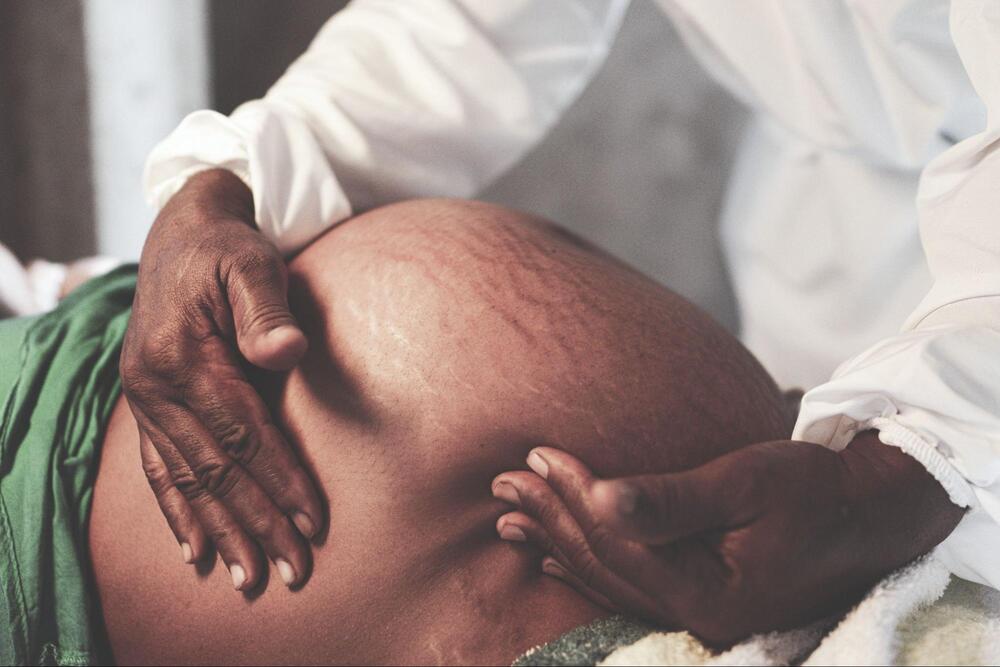New data reveals population anxieties leading governments across the world to adopt policies aimed at raising, lowering or maintaining fertility rates at odds with women rights, according to a recent report published by the UN Population Fund (UNFPA), the UN’s health and reproductive health agency.
Published annual since the 1978, the report “8 Billion Lives, Infinite Possibilities: the case for rights and choices”, urges governments and media to abandon overblown narratives about population booms and busts.
The title refers to the population estimate last November. The day 15 November 2022 was marked by the UN as the approximate day when the world population reached eight billion people, a figure which aroused both interest and alarm. The title also summarizes the message in the report, UNFPA Executive Director Dr. Natalia Kanem told The Brussels Times.
“Women’s bodies should not be held captive to population targets,” she said. “To build thriving and inclusive societies, regardless of population size, we must radically rethink how we talk and plan for population change.”
The report highlights the fact that 44 percent of partnered women and girls in 68 countries do not have right to make informed decisions about their bodies when it comes to having sex, using contraception and seeking health care. Millions of women worldwide have an unmet need for safe contraception.
The situation vares very much by country, with a majority of all countries having fertility rates below the reproduction rate, leading to an aging population, and other countries increasing their populations well above available resources.
India will be the world's most populous country by the end of April, overtaking China, with more than 1.425 billion people, according to a statement on Monday by the UN Department of Economic and Social Affairs.
This might lead to the conclusion that “no size fits all” and that countries must adapt their fertility and family policies to their national needs. According to the report, however, history has shown that fertility policies designed to increase or lower birth rates are very often ineffective and undermine women rights.
“We can say that every country is different and requires its own unique set of policies,” explained Rebecca Zerzan, the senior editor of the report. “However, there are some common approaches that should be applied everywhere. For example, reproductive health and rights should be a foremost consideration when fertility policies are adopted and evaluated.”
The report resonates with the Cairo Declaration (1994) which tried to move population policy away from a focus on numbers to human and women rights. Family planning should not be used as a tool for achieving fertility targets but as a tool for empowering individuals and women’s rights to choose if, when and how many children they would like to have.
The report includes a toolkit for demographic resilience. Is the main message that decisions about family size should be left to the individual woman and family, whether or not they can afford more children?
“The main message of the report is that people and policymakers find it all too easy to decide what women's fertility should be, rather than seeking to understand the needs and desires of women themselves,” Rebecca Zerzan replied. “For far too long, it has been assumed that women's fertility should conform to the expectations of policymakers, husbands, in-laws, or others.”
“In fact, our report shows that tragically vast numbers of women are not able to make their own choices about their own reproduction. We simply cannot afford any policies or approaches that further undermine women's bodily autonomy.”
The Africa Food Summit in Dakar in January focused on the need to make the continent self-reliant and unlock its food-producing potential to feed its growing population which is forecasted to increase from 1,4 billion to 2,5 billion by 2050. But countries in Africa are not responsible for the climate crisis and UNFPA is reluctant to prescribe policies to reduce the fertility rates.
European Commission Vice-President Dubravka Šuica participated in a panel debate organized by Friends of Europe at the launch of the report. She was in charge of the Conference on the Future of Europe where issues related to demographic changes in the EU also featured. One of the proposals (number 15) was specially focused on the challenges arising from an aging population:
| We propose to address the challenges arising from the demographic transition, as a critical ingredient of Europe’s overall resilience, in particular low birth rates and a steadily ageing population, by ensuring support to people throughout the lifecycle. This should involve comprehensive action aimed at all generations, from children and young people, to families, to the working-age population, to older persons who are still prepared to work as well as those in retirement or need of care; |
According to the Commission, demographic change is high on its political agenda, and demographic concerns are integrated into the development of EU policies. “The demographic transition also presents challenges and opportunities for our democracy. In that regard, deliberative and other participatory processes can play a crucial role in increasing the resilience of our democracies and addressing the complex issues our societies are facing.”
Some issues that affect women rights are not directly dealt with in the report, such as abortion, adoption, same-sex parenthood, polygamy and female genital mutilation. UNFPA has programmes to help communities to give up female genital mutilation and to support the health of women and girls. For more information about UNFPA’s activities, click here.
M. Apelblat
The Brussels Times

